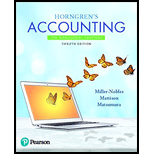
Profit Margin Ratio: Profit margin ratio reflects the portion of net earnings in the net sales. It is a profitability measure tool that is used to evaluate the net income a business earns on every dollar of net sales. It is computed as net income divided by net revenue.
Asset Turnover Ratio: It is the extended form of rate of return on total assets. Rate of return on total assets measures the profit generated but asset turnover measures the sales generated but from the use of total assets.
Return on Common Stockholder’s Equity: It measures the achievement of Company in generating profits for common stockholders. It is calculated by dividing Net Income excluding Preferred Dividends with Average Common Stockholder’s Equity.
Earnings per Share (EPS): It is a mandatory term to be reported with the financials of a corporation in the annual report. It reflects the amount earned or lost on every outstanding common equity share. It is widely used to evaluate the performance of a business.
Dividend Payout: After the calculation of earnings per share, companies declare the amount to be paid to common shareholders out of those earnings. This segment of earnings per share declared to be paid as dividends is measure by dividend payout ratio. It is reflected as in percentage of EPS.
1.
To Calculate: The profit margin ratio for 2018 and 2019 for M Company.
2.
To Calculate: The rate of return on total assets for 2018 and 2019 for M Company.
3.
To Calculate: The asset turnover ratio for 2018 and 2019 for company M.
4.
To Calculate: The rate of return on common
5.
To Calculate: The earnings per share for 2018 and 2018 for company M.
6.
To Calculate: Dividend payout for 2019 for M Company.
7.
To Analyze: M Company’s operating performance during 2019.
Want to see the full answer?
Check out a sample textbook solution
Chapter 17 Solutions
Horngren's Accounting (12th Edition)

 AccountingAccountingISBN:9781337272094Author:WARREN, Carl S., Reeve, James M., Duchac, Jonathan E.Publisher:Cengage Learning,
AccountingAccountingISBN:9781337272094Author:WARREN, Carl S., Reeve, James M., Duchac, Jonathan E.Publisher:Cengage Learning, Accounting Information SystemsAccountingISBN:9781337619202Author:Hall, James A.Publisher:Cengage Learning,
Accounting Information SystemsAccountingISBN:9781337619202Author:Hall, James A.Publisher:Cengage Learning, Horngren's Cost Accounting: A Managerial Emphasis...AccountingISBN:9780134475585Author:Srikant M. Datar, Madhav V. RajanPublisher:PEARSON
Horngren's Cost Accounting: A Managerial Emphasis...AccountingISBN:9780134475585Author:Srikant M. Datar, Madhav V. RajanPublisher:PEARSON Intermediate AccountingAccountingISBN:9781259722660Author:J. David Spiceland, Mark W. Nelson, Wayne M ThomasPublisher:McGraw-Hill Education
Intermediate AccountingAccountingISBN:9781259722660Author:J. David Spiceland, Mark W. Nelson, Wayne M ThomasPublisher:McGraw-Hill Education Financial and Managerial AccountingAccountingISBN:9781259726705Author:John J Wild, Ken W. Shaw, Barbara Chiappetta Fundamental Accounting PrinciplesPublisher:McGraw-Hill Education
Financial and Managerial AccountingAccountingISBN:9781259726705Author:John J Wild, Ken W. Shaw, Barbara Chiappetta Fundamental Accounting PrinciplesPublisher:McGraw-Hill Education





